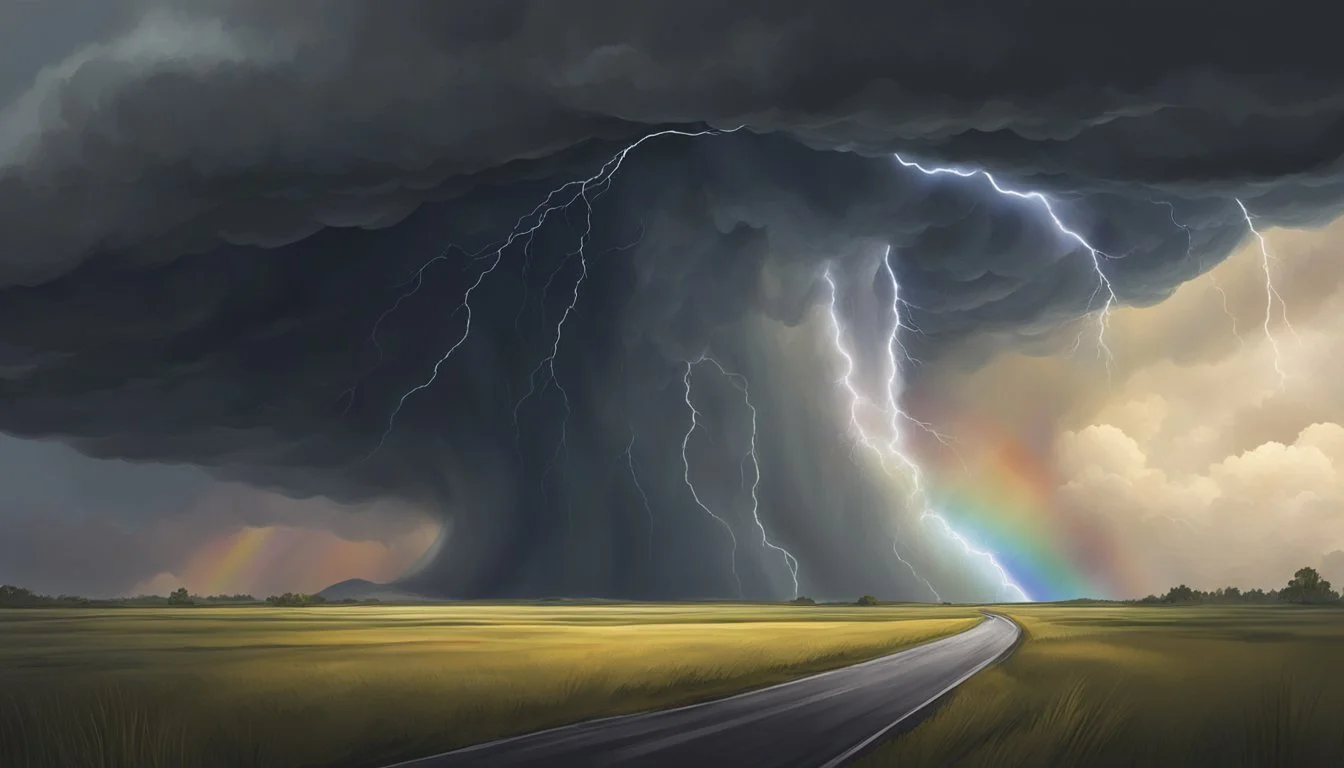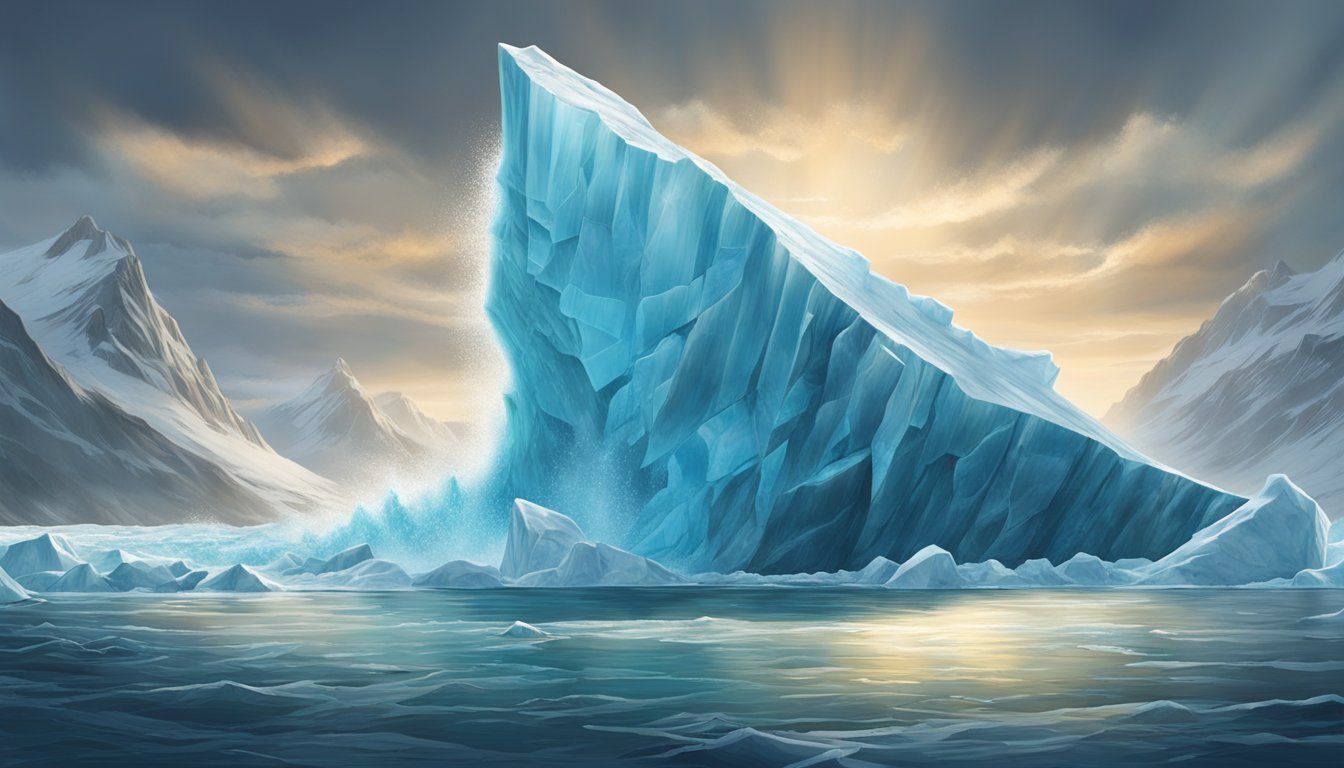5 Documentaries About the Strangest Weather Phenomena on Earth
Exploring Nature's Meteorological Marvels
Earth's weather never ceases to amaze and perplex us. From blood-red rainfall to clouds that can be lethal, our planet experiences a wide array of unusual meteorological phenomena. These rare and often unexplainable events captivate both scientists and the general public alike.
Documentaries offer a unique window into these extraordinary weather occurrences, combining expert insights with stunning visuals to educate and enthrall viewers. By exploring five notable films on this subject, we can gain a deeper appreciation for the complexity and wonder of Earth's atmospheric processes. These documentaries showcase some of the most bizarre and fascinating weather events ever recorded, shedding light on the mysteries that continue to surround them.
1) "Chasing Ice" by Jeff Orlowski
"Chasing Ice" documents the work of environmental photographer James Balog as he captures visual evidence of climate change in the Arctic. Directed by Jeff Orlowski, the film showcases Balog's Extreme Ice Survey project.
The documentary follows Balog and his team as they deploy custom-designed time-lapse cameras across the Arctic. These cameras record the dramatic retreat of glaciers over several years.
One of the film's most striking sequences shows a massive calving event at Greenland's Jakobshavn Glacier. This event, lasting 75 minutes, provides a vivid illustration of the rapid changes occurring in polar regions.
Orlowski's film not only presents stunning visuals of ice landscapes but also tells the personal story of Balog. Initially skeptical about climate change, Balog's experiences during the project transform his perspective.
"Chasing Ice" serves as a powerful tool for communicating the reality of climate change. It combines scientific data with breathtaking imagery to create a compelling narrative about our changing planet.
2) "Fire in the Sky" by Jerry Ciccoritti
"Fire in the Sky" is a captivating documentary that explores the mesmerizing phenomenon of auroras. Directed by Jerry Ciccoritti, this film takes viewers on a journey to Earth's polar regions where these ethereal light displays occur.
The documentary delves into the science behind auroras, explaining how charged particles from the sun interact with Earth's magnetic field. It showcases stunning footage of auroras in various colors, from vibrant greens to deep purples.
Ciccoritti's film features interviews with scientists and researchers who study auroras. Their insights provide viewers with a deeper understanding of these natural light shows and their significance in our planet's atmosphere.
"Fire in the Sky" also touches on the cultural significance of auroras in different societies. It explores various myths and legends associated with these celestial displays across different cultures.
The documentary's breathtaking visuals and informative content make it a must-watch for anyone interested in atmospheric phenomena or natural wonders.
https://www.imdb.com/title/tt0403488/
3) "The Weather War" by Fredrik Cassel
"The Weather War" is a thought-provoking documentary that explores humanity's attempts to control the weather. Directed by Swedish artists Mats Bigert and Lars Bergström, the film blends elements of land art performance and road movie genres.
The documentary follows the artists as they travel to the US tornado belt with a unique machine-sculpture called the Tornado Diverter. This 100,000-volt device is based on Russian scientist Vladimir Pudov's tornado theory.
Throughout the film, Bigert and Bergström examine various methods humans have used to manipulate weather patterns. They investigate both historical and contemporary approaches to weather modification.
"The Weather War" raises important questions about our relationship with nature and the ethical implications of trying to control it. The film's visually striking imagery and innovative approach to its subject matter make it a standout in the genre of weather-related documentaries.
Released in 2012, "The Weather War" offers viewers a fascinating look at the intersection of art, science, and environmental issues.
https://www.imdb.com/title/tt2318901/
4) "Twister Chasers" by Jody Wheeler
"Twister Chasers" takes viewers on an exhilarating journey through the American Midwest, following those who pursue nature's most violent storms. Directed by Jody Wheeler, this documentary showcases the passion and dedication of tornado chasers.
The film explores the diverse motivations driving these storm enthusiasts. Scientists seek to understand the mechanics of tornadoes, while others are drawn by the sheer thrill of witnessing nature's raw power up close.
Wheeler's documentary captures the inherent risks involved in storm chasing. Participants put themselves in harm's way to photograph and experience these unpredictable weather phenomena.
"Twister Chasers" offers a unique perspective on the oddly magnificent storms that plague the Midwest. It provides insight into why chasers become obsessed with these dangerous yet captivating atmospheric events.
The film features a mix of amateur storm chasers, professional guides, and researchers. Each group brings a different approach and purpose to their pursuit of tornadoes.
https://www.primevideo.com/detail/Twister-Chasers/0TVOQ3YNP5T1HPXVMTHB6TWVWK
5) "Into the Storm" by Steven Quale
"Into the Storm" is a 2014 disaster film directed by Steven Quale. It follows storm chasers and high school students as they encounter a series of intense tornadoes in a small town.
The film combines found footage elements with traditional cinematography to create a realistic depiction of severe weather events. Quale's background in documentary filmmaking, including work on the IMAX 3D film "Aliens of the Deep," informed his approach to this project.
"Into the Storm" features a cast including Richard Armitage, Sarah Wayne Callies, and Matt Walsh. The movie showcases impressive visual effects to bring the destructive power of tornadoes to life on screen.
While not strictly a documentary, the film aims to provide an immersive experience of extreme weather phenomena. It offers viewers a glimpse into the dangers and unpredictability of severe storms.
https://en.wikipedia.org/wiki/Into_the_Storm_(2014_film)
Understanding Weather Phenomena
Weather phenomena encompass a wide range of atmospheric events that shape our environment. These occurrences can range from common to extraordinary, influencing daily life and captivating scientists and observers alike.
Defining Weather Phenomena
Weather phenomena are observable events in the atmosphere that result from the interaction of various factors such as temperature, humidity, air pressure, and wind patterns. These events can be short-lived or persist for extended periods.
Common phenomena include rain, snow, and thunderstorms. More unusual occurrences might involve rare cloud formations or extreme temperature fluctuations.
Scientists use sophisticated tools and models to study and predict weather patterns, aiming to understand the complex systems that drive atmospheric changes.
Types of Unusual Weather Events
Unusual weather events often defy conventional expectations and can be both awe-inspiring and potentially dangerous.
Blood rain: A rare phenomenon where rain appears red due to dust or microscopic particles in the atmosphere.
Ball lightning: Unexplained luminous spheres that occasionally appear during thunderstorms.
Fire whirls: Rotating columns of air that draw flames and ash upward during wildfires.
Some events, like raining animals, have been reported throughout history. While often attributed to tornadoes lifting creatures into the air, many such claims remain unverified.
Extreme temperature inversions can create mirages or cause sounds to travel unusually long distances. These phenomena demonstrate the atmosphere's capacity to produce startling effects under specific conditions.
Impact of Strange Weather on the Environment
Unusual weather phenomena can significantly alter ecosystems and human activities. These events often lead to unexpected changes in local habitats and disrupt normal environmental processes.
Ecological Consequences
Strange weather events can have profound effects on plant and animal life. Sudden temperature fluctuations may trigger premature blooming or migration patterns. Extreme precipitation can cause flooding, altering soil composition and displacing wildlife.
Rare phenomena like fire tornadoes can devastate forests, destroying habitats in minutes. Conversely, mammatus clouds can create unique microclimates, supporting specialized plant species.
Marine heatwaves impact coral reefs, leading to bleaching events and loss of biodiversity. Unusual cold snaps in tropical areas can harm temperature-sensitive species, disrupting food chains.
Human Activity and Weather Patterns
Unexpected weather phenomena often challenge human infrastructure and planning. Sudden microbursts can damage buildings and crops, leading to economic losses.
Ball lightning, though rare, poses safety risks and can interfere with electrical systems. Unusual fog formations may disrupt transportation, affecting air and sea travel.
Climate change is increasing the frequency of some strange weather events. This shift requires adapting agricultural practices and urban planning strategies.
Studying these phenomena helps improve weather forecasting models. Enhanced prediction capabilities allow for better preparation and mitigation of potential impacts on communities and ecosystems.
Human-induced changes to the environment may contribute to the occurrence of some unusual weather events. This relationship highlights the need for sustainable practices to minimize negative feedback loops.




